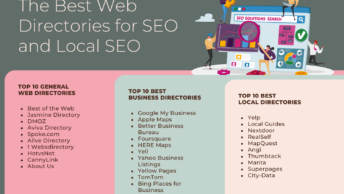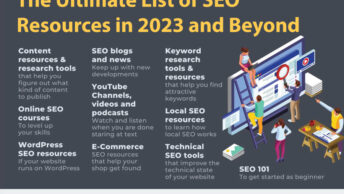
Believe it or not, new people join the search marketing world every day. Frankly, that scares me a little bit. It’s not the competition or the potential loss of business that scares me, but the sources
people are relying on to give them the “right” information. That said, here are the top 6 most classic SEO articles that I suggest anyone new to the industry read. And then read again. Some things in SEO/SEM world haven’t changed much…and a refresher is always a good idea.
“Successful Site In 12 Months With Google Alone“
Written by Brett Tabke at WebmasterWorld over 7 years ago, the fundamental steps for getting started down the road toward success in Google are covered in this archived post. While I don’t agree 100% with everything included here – like the idea of dismissing the use of keywords in the domain and the necessity of submitting the site to search engines manually – I love the emphasis that Brett puts on creating quality content regularly.
Several times within the post Brett mentions content, creating logical directories for content, keeping new content flowing, etc. That is one thing that certainly hasn’t changed. Content is still king and the sites the provide the most relevant and useful content always seem to work their way to the top of the SERPs.
The search engines may now be looking for more kinds of content (i.e. video) than back in 2002, it’s important to recognize that serving up the content that will be most helpful to users is still the goal of search engines. Convincing the search engines that your content will be most helpful to search users is yours.
“SEO Is Easy? Let’s Look At The Hard 5 Percent“
A more recent post this time, by Todd Friesen, published in the 100% Organic section of Search Engine Land which helps to draw the line in the sand between some aspects of SEO that many believe can be done by anyone and the vastly important last 5% that if done incorrectly can have far-reaching and long-term consequences that can spell catastrophe for a site.
Todd highlights the following aspects of SEO as “The 5 Percent”:
- URL Structure (the fixing thereof)
- Advanced Linking
- Appropriate Cloaking (err…IP Delivery)
- Dynamic Template Modification
- Client Management (agency life)
- Redirection (site moves or redesign)
Particular emphasis is placed on the importance of managing clients’ expectations and having clear lines of communication. He notes the particular challenges faced by both parties when the client feels they’ve received lackluster results, while the agency suffers the frustration of their changes not being implemented.
“Filthy Linking Rich And Getting Richer!”
Written by Mike Grehan back in October 2004, this post still holds true today. With statements like:
“…And I’m afraid some of it may be pretty bleak reading if you have newly created, lowly indexed web pages and you’re desperately waiting for someone to link to them so that they stand a chance of ranking in a search engine with a static link based algorithm…”
And:
“…In fact, it has been proposed that “the rich get richer” effect drives the evolution of real networks. If one node has twice as many links as another node, then it is precisely twice as likely to receive a new link…”
Mike Grehan finds some important correlations between science, psychology and the underlying reasons that some sites build links more easily than others. This post takes a strikingly scientific turn with references to Hungarian mathematician and genius, Paul Erdos and a study by sociologists Fredrick Liljeros and Christopher Edling of Stockholm University, the post itself possesses a great deal of insight into why the idea of “the rich get richer” does not just apply to power and wealth in a traditional sense, but in the virtual world of online currency – links.
This may be one of the more challenging posts you read this week, but it’s well worth the effort.
“101 Ways to Build Link Popularity“
Aaron Wall and Andy Hagans joined forces for this gem of a post highlighting the importance of link building back in 2006. As illustrated by this quote, not that much has changed in the world of link building since then:
“Link Building… Time-intensive. Frustrating. Sometimes confusing. Yet Unavoidable. Because ultimately, it’s still the trump card for higher rankings…”
Obtaining high quality links from trusted sources is no easier today than back in 2006, and yet – no less important either. While social networking and social voting sites like Digg and StumbleUpon have provided opportunities to expose content to a much larger audience, demands on the quality and type of content have increased significantly, as well.
“Spam Guide for Raters”
While I hesitate to recommend that anyone follow a SPAM guide, this article at Henk van Ess’s Search Bistro will help anyone identify SPAM techniques, regardless of intent to either abuse or report them. The blog may not have been updated since late 2007, but this guide is as useful today for identifying spam-o-rific tactics – or, more constructively – understanding what is considered SPAM, than ever.
Topics covered include:
- Sneaky Redirects
- Hidden Text / Hidden Links
- Thin Affiliate Doorway Pages
“Hilltop in Plain English“
Jason Duke addressed the infamous “Hilltop” update carried out by Google in 2004 that seemed to throw a monkey wrench into the Link Olympics going on at that time.
The essence of “Hilltop” was a significant shift in attention from merely quantity of links to a site, to more quality links to a site from sites that are topically related or considered more authoritative.
Oh, How Little Has Changed…
What do all of these posts have in common? They are all well beyond the time period in which they should be relevant and useful in the world of SEO. Yet, they’re not. They all include very important, basic and fundamental information that still applies as much today as it did when they were originally written.
There are several other posts that deserve a mention here, and probably hundreds of others I just don’t have room to mention. Don’t discount a post’s relevance based solely on its age.
- “Tips for Attaining One Way Inbound Links“
- “SEO Friendly Affiliate Systems“
- “SEO 101 – The Timeless and Classic Hits“
Read them, test the theories when & where you can and determine for yourself what still applies and what doesn’t. You’ll find that shockingly little has changed from an on-site SEO perspective and that links still rule the world. What’s changed is where the links come from and understanding how to appeal to those that may link naturally to your site.






Wow. That Spam Guide for Raters is a blast from the past. I wonder how much the guidelines have changed since it was published.
Wow. That Spam Guide for Raters is a blast from the past. I wonder how much the guidelines have changed since it was published.
I thought the same thing as I began to reread it to see if I should include it in this most. The funny thing is that it still appears to be completely accurate. In my experience there is no spam-o-rific tactic included in “Spam Guide for Raters” that no longer qualifies as SPAM. The list is likely longer now, but these items still make the cut.
I thought the same thing as I began to reread it to see if I should include it in this most. The funny thing is that it still appears to be completely accurate. In my experience there is no spam-o-rific tactic included in “Spam Guide for Raters” that no longer qualifies as SPAM. The list is likely longer now, but these items still make the cut.
Understanding SEO can be complicated. And even if you learned how to use them, other sites do not welcome SEOs.
Understanding SEO can be complicated. And even if you learned how to use them, other sites do not welcome SEOs.
Thank you the list of articles. I am always looking for things that stand the test of time and reading these for myself it is clear that they are well written and thought out. Although some of the information is dated (very little) it is still a good guide and introduction to building great websites or better yet an online presence.
– Doug
Thank you the list of articles. I am always looking for things that stand the test of time and reading these for myself it is clear that they are well written and thought out. Although some of the information is dated (very little) it is still a good guide and introduction to building great websites or better yet an online presence.
– Doug
The first hits the nail on head by taking a quality approach with regularly updated content.
The first hits the nail on head by taking a quality approach with regularly updated content.
[…] Classic SEO articles […]
[…] provides us with 6 classic articles every SEO…. Just missing the list is Rand’s […]
[…] provides us with 6 classic articles every SEO should read. Just missing the list is Rand’s post about why the meta keywords tag is a top ranking factor […]
[…] provides us with 6 artist articles every SEO should read. Just absent the itemize is Rand’s place most ground the meta keywords attach is a crowning senior […]
[…] provides us with 6 classic articles every SEO should read. Just missing the list is Rand’s post about why the meta keywords tag is a top ranking factor […]
[…] provides us with 6 classic articles every SEO should read. Just missing the list is Rand’s post about why the meta keywords tag is a top ranking factor […]
[…] provides us with 6 classic articles every SEO should read. Just missing the list is Rand’s post about why the meta keywords tag is a top ranking factor […]
[…] What Hasn’t Changed In SEO/SEM – The Top 6 […]
[…] What Hasn’t Changed In SEO/SEM – The Top 6 […]
[…] What Hasn’t Changed In SEO/SEM – The Top 6 […]
[…] What Hasn’t Changed In SEO/SEM – The Top 6 […]
[…] provides us with 6 classic articles every SEO should read. Just missing the list is Rand’s post about why the meta keywords tag is a top ranking factor […]
Any recommendations other than pointbreak and fractal EA?
Any recommendations other than pointbreak and fractal EA?
Thanks for all the helpful hints.
Thanks for all the helpful hints.
The beszt thing is to keep updating the contents with valuable informations or news..
The beszt thing is to keep updating the contents with valuable informations or news..
Nothing comes easily…you neede to work on it daily with valuable contents…
Nothing comes easily…you neede to work on it daily with valuable contents…
thanks for the helpful information about seo and article links.
thanks for the helpful information about seo and article links.
Thanks for sharing such articles. In my perspective, the most important factor in SEO success is the unique and Quality content, which will give you natural boost over your competitors. You will also get natural inbound links and your site will rank higher.
Thanks for sharing such articles. In my perspective, the most important factor in SEO success is the unique and Quality content, which will give you natural boost over your competitors. You will also get natural inbound links and your site will rank higher.
– Hi Kap! Thanks so much for the comment. I love The Glow and have aerimdd it from afar for a little while. Thanks for sharing and for all the kind words. Please stay in touch.